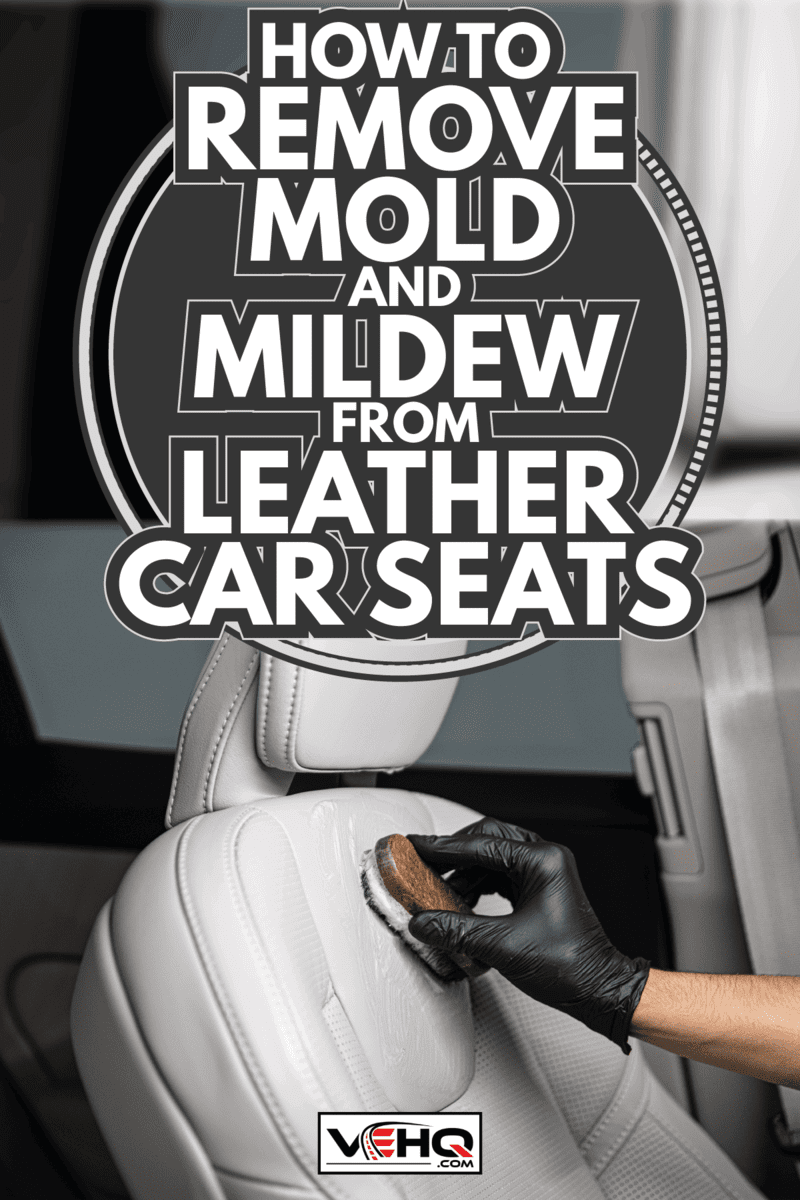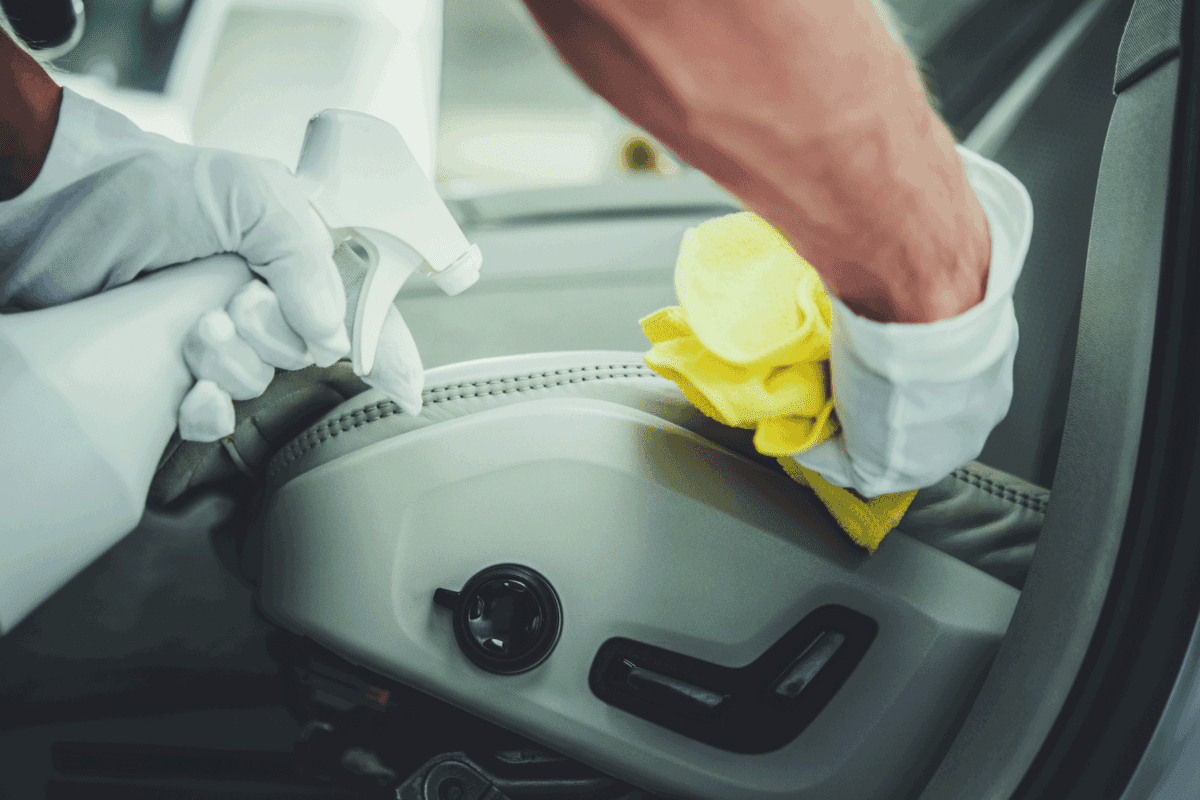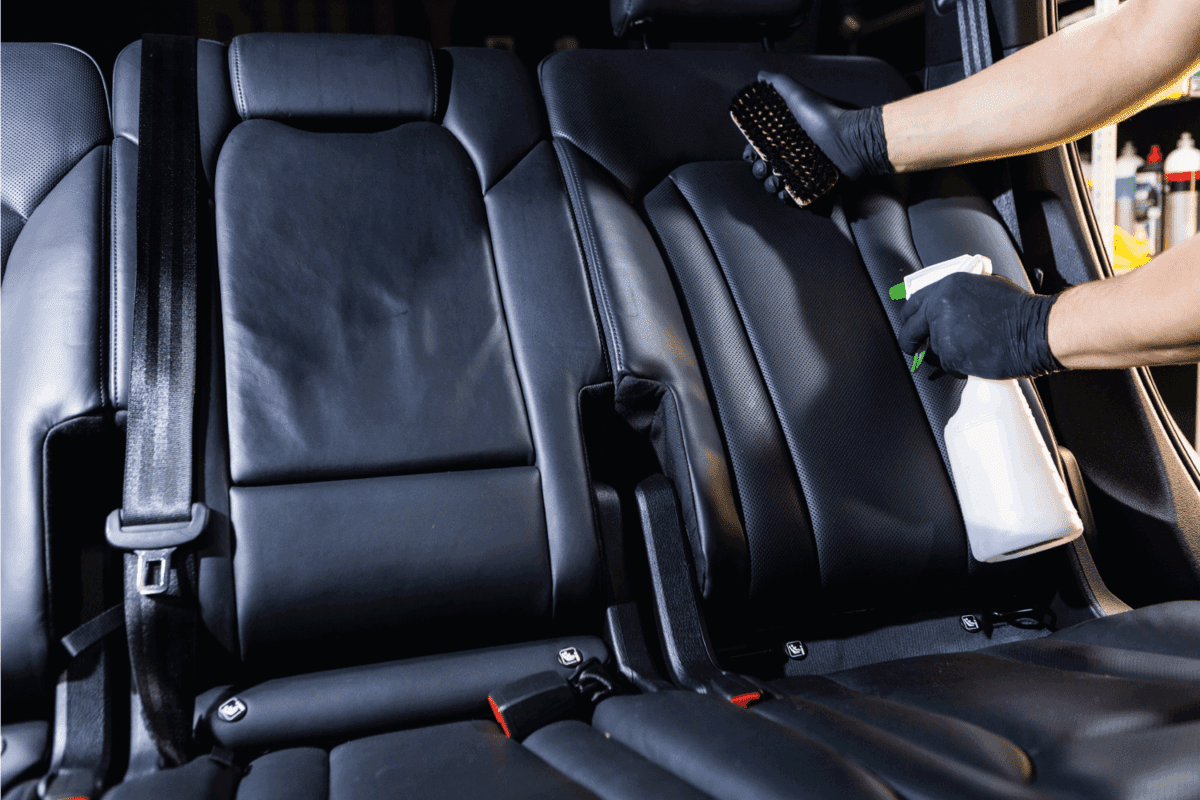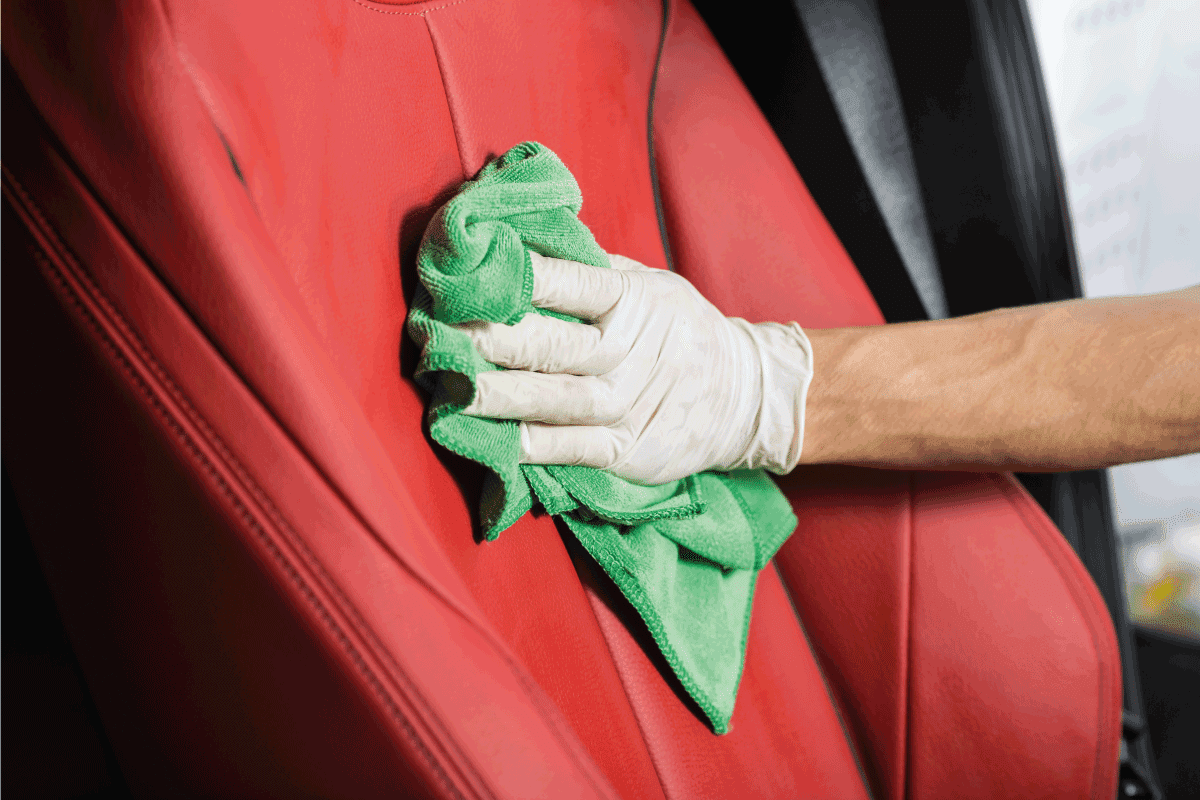On dark leather car seats, you don’t always see it, but you certainly smell it. We’re talking about mold and mildew, two forms of fungi you do not want in your vehicle. How do you get rid of mildew and mold stains, stat? We did the research to bring you the answer.
Here’s how to remove mold and mildew from leather car seats:
- Combine rubbing alcohol and water
- Wipe and scrub until traces of the mold/mildew are gone
- Air-dry or hand-dry the area
- Use baking soda to remove the musty smell
This article will be your guide to all things mold and mildew in cars. You’ll learn where mold comes from, where it can grow in your car, and which products are safe to use to remove it versus those that are not. Without further ado, let's get into it.

Removing Mold and Mildew From Your Leather Car Seats: Follow These Steps
Per the information in the intro, let’s delve into your mold and mild removal options once your car’s leather upholstery is stained by the fungi. You only need rubbing alcohol, a microfiber cloth, a bucket or container, and baking soda.
1. Mix Rubbing Alcohol and Water
Rubbing alcohol is efficient in removing surface mold or mildew. For every one part alcohol, you need one part H2O. That ratio will dilute the mixture somewhat but still maintain its potency.
Pour the mixture into a small container or a bucket depending on how moldy your vehicle’s upholstery is. You might even be able to use a cup if your leather car seats have one or two moldy spots.
No rubbing alcohol? No problem! You can also transfer vinegar into a spray bottle and mist the area.
2. Wipe and Scrub the Affected Area
Assuming you’re using water and rubbing alcohol, dip a clean, dry microfiber cloth into the solution. Begin scouring the affected area(s). If the leather seats have gotten quite moldy or mildewy, then go one spot at a time.
You’ll probably have to put some elbow grease into this part, especially if the mold or mildew stains are pretty large. Once you can’t see the fungi on the leather, then you can move on to the next spot.
3. Air-Dry or Hand-Dry the Leather
Now it’s time to dry the leather. You don’t want leather surfaces to remain wet for too long, as that could have been what caused the mold or mildew in the first place (more on the causes of mold in just a moment).
If it’s a sunny day, then park your car in the middle of the driveway and open all four doors. The sun will quickly dry the wet car upholstery. Since mold and mildew need a dark, moist environment to thrive, the sun can also kill the fungi.
Maybe you don’t have the time or the means of leaving your car out for that long. That’s okay. You can always take another clean microfiber cloth and blot dry the leather.
Genuine leather can absorb water easily, so press on the car upholstery to ensure it’s completely dry.
4. Use Baking Soda for Lingering Odors
The mold and mildew are gone, but the smell can sometimes remain. Even your strongest air freshener won’t be able to minimize that awful odor. Instead, you must tackle the mold smell head-on.
Take some baking soda and sprinkle it generously on the leather car seats. Give the baking soda as much time as you can wait for it to work, ideally overnight. Then bring out a portable vacuum cleaner and suck up all the baking soda residue.
If the mold smell is still detectable even after using baking soda, that’s a bad sign. The mold might not only be on your car seats but elsewhere in the vehicle. We recommend removing all the car mats and looking at the floors.
Can you still not find the mold? At that point, you’ll have to bring the vehicle to a mechanic or a specialist. The mold is somewhere and must be removed.

What Causes Mold in Cars?
According to the CDC, “mold will grow in places with a lot of moisture, such as around leaks in roofs, windows, or pipes, or where there has been flooding.”
Disregarding the latter part of that statement, since it’s not wholly applicable to automobiles, all it takes is moisture for mold to develop. Perhaps you spilled a drink in your car (or the kids did), and you didn’t address it quickly enough.
If you leave your sunroof open when it rains, mold can follow. That’s also true if your vehicle floods or leaks.
The best way to prevent mold is to ensure your car is well-sealed. Don’t wait to clean it if you or anyone else spills food or drink in the car.
Where Can Mold Grow in Cars?
Should your car have a mold problem, where in the vehicle are you likeliest to see it?
Upholstery is a frequent target of mold, from your car seats to your plush car ceiling and the soft flooring (especially underneath the floor mats where it’s dark and moist). Although you don’t see it on metal all that much, mold can grow on your vehicle’s metal chassis or other components.
Mold can even develop on plastic, although not as easily. You could notice some on your car’s windows in a severe case.
We do want to mention that mold is more than black or gray. It comes in every color you can think of, including white, red, yellow, pink, orange, purple, and brown.
Depending on how much light is present as well as the humidity and whether there’s a food source, mold will grow in different colors.

What Does Bleach Do to Leather Seats?
The mold didn’t quite come out with rubbing alcohol or vinegar, so you think you’ll use bleach instead.
Please don’t, especially if you care about your leather upholstery. Bleach will permanently wreck the appearance of the leather.
The bleaching agent can discolor the leather, especially if yours is darker. All the harsh ingredients in bleach can also destroy the leather by eating away at the expensive material.
All that and bleach doesn’t work. Healthline states that “bleach can’t kill mold on porous surfaces…that’s because mold spreads its roots deep into porous surfaces. Even after applying bleach and wiping away mold from these surfaces, the mold will continue to grow beneath the surface and will return to the area you cleaned in a short amount of time.”
Leather is nonporous unless your vehicle is outfitted with faux leather, such as polyvinyl chloride or PVC. Although the porosity of PVC means bleach could remove mold, it would still do so at the expense of the leather’s color and quality.
It’s not only bleach you have to be wary of using for your leather car seats. Any cleaners with ingredients like ammonia are to be avoided when tending to leather.
Will Lysol Spray Damage Leather?
You traded out the bleach for a slightly less harsh cleaner: Lysol spray.
If you’re using this to get rid of mold in your car, Lysol spray is not the best product. The stuff can remove mold for a short time, but Lysol doesn’t kill mold outright. The fungi will regrow; it’s just a matter of when not if.
Okay, so what about general car cleanliness and maintenance? Is Lysol spray a suitable choice?
No. Lysol is primarily alcohol-based. Have you ever used alcohol disinfectant on your hands? They dry out fast. Leather is animal hide, so it behaves like skin. In other words, by using alcohol-based cleaners such as Lysol, the leather will dry out.
Maybe one instance of using Lysol spray won’t be the end of the world, but if you make it a regular enough habit, you could end up with cracked, damaged leather that’s anything but plush and supple.

In Closing
When mold or mildew grows on your car’s leather upholstery, the sight can be very harrowing. Fortunately, your leather seats are usually not ruined.
Use some rubbing alcohol and water on the area or spray a bit of vinegar. Don’t forget to remove the mold odors with baking soda.
Avoid cleaning your leather car upholstery with Lysol spray (or wipes) or bleach. The ingredients in these common cleaners are too hard on leather and can ruin it more than the mold or mildew can!
Before you go, be sure to check out these other guides:
